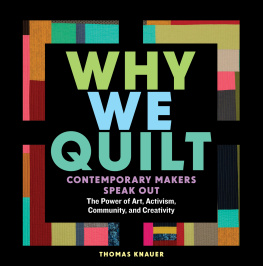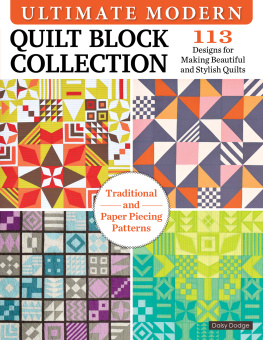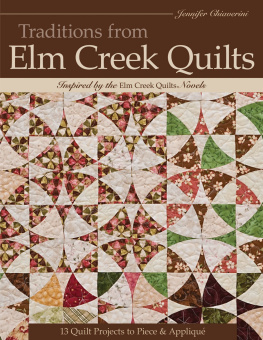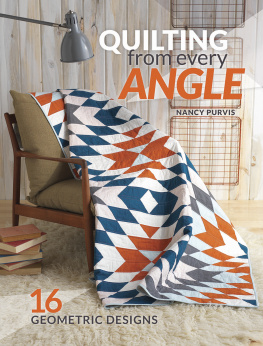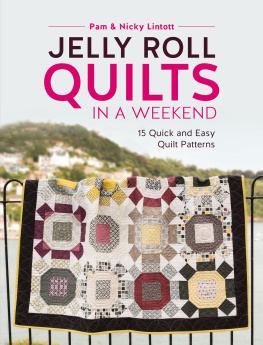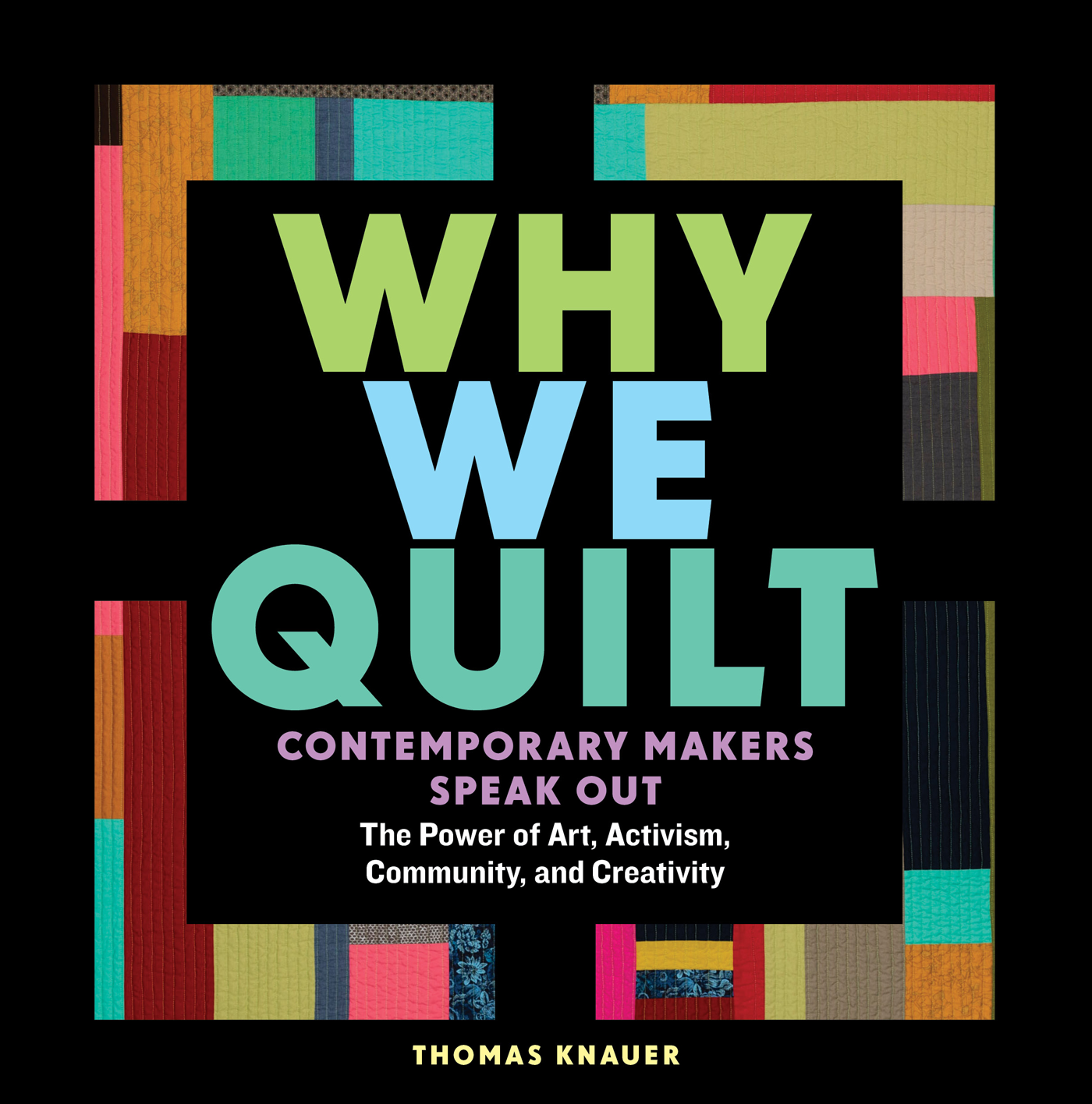The mission of Storey Publishing is to serve our customers by publishing practical information that encourages personal independence in harmony with the environment.
Edited by Deborah Balmuth and Michal Lumsden
Art direction and book design by Carolyn Eckert
Text production by Jennifer Jepson Smith
Indexed by Nancy D. Wood
Cover photography , including front and back inside by Mars Vilaubi, except Chawne Kimber, back (top center); Denyse Schmidt, spine (top)
Interior photography by Mars Vilaubi
Additional photography by Alan Radom,
Quilt patterns by the author
Text 2019 by Thomas Knauer
Ebook production by Kristy L. MacWilliams
Ebook version 1.0
October 15, 2019
All rights reserved. No part of this book may be reproduced without written permission from the publisher, except by a reviewer who may quote brief passages or reproduce illustrations in a review with appropriate credits; nor may any part of this book be reproduced, stored in a retrieval system, or transmitted in any form or by any means electronic, mechanical, photocopying, recording, or other without written permission from the publisher.
The information in this book is true and complete to the best of our knowledge. All recommendations are made without guarantee on the part of the author or Storey Publishing. The author and publisher disclaim any liability in connection with the use of this information.
Storey Publishing
210 MASS MoCA Way
North Adams, MA 01247
www.storey.com
Library of Congress Cataloging-in-Publication Data on file
Storey books are available at special discounts when purchased in bulk for premiums and sales promotions as well as for fund-raising or educational use. Special editions or book excerpts can also be created to specification. For details, please call 800-827-8673, or send an email to .
For all the quilters out there making their own private histories.
For Simon, Matilda, and Katherine. They know why.
Contents
Why I Quilt
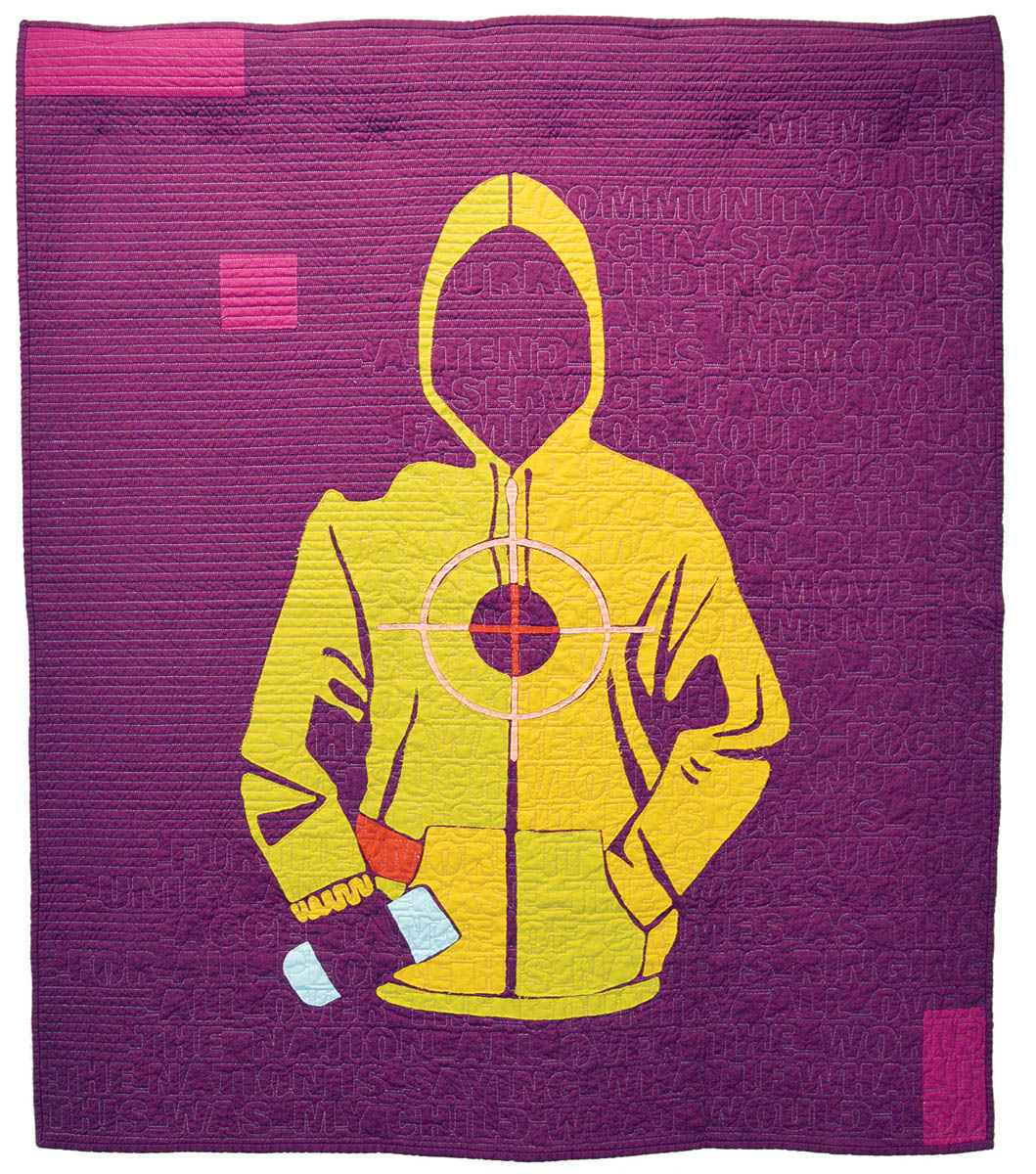
Tea and Skittles, Thomas Knauer, 2015, 40 48"
By turning the shooting target that was sold after the killing of Trayvon Martin into a baby quilt and quilting it with text from the boys obituary, I use this quilt to question a society that claims to protect children even as it sees children of color as threats, and even targets.
My family came from Lancaster, Pennsylvania home to the nations largest community of Amish, who are famously iconic quilters but I didnt grow up with quilts. My mother and grandmother were knitters, so we slept under store-bought comforters and the occasional knit afghan.
I suppose I first really became aware of quilts when, as a college student, I encountered the AIDS Memorial Quilt. The concepts of quilts as activism, quilts as memorials, and quilts as voices all appealed to me profoundly. And yet, though I found the AIDS quilt inspiring, I never thought about picking up needle and thread and making a quilt.
It wasnt until my daughter was born that I truly embraced my first quilt. A friends mother sent baby Bee a wonderful baby quilt, and of course our first question was, How do we take care of it? The answer, Wash it when it gets dirty, has stuck with me through my years of quilting. I make quilts that are meant to be used, even as they are social commentary. And yes, some of them have stains that just wont come out.
But I am getting ahead of myself. When my daughter was a toddler, I got a contract to design quilting fabric. Making a quilt seemed like a logical exercise for me, something to do once to see how fabric works when cut up into small pieces. So I set about designing my first quilt. I then sat down at the sewing machine my mother-in-law had given us and made a quilt top. I threw everything at it: piecing, appliqu, even some bits of hand embroidery. I didnt have a clue what I was doing, which was probably for the best; I was working unconstrained.
I finished that first quilt top in a couple of days and assumed it would be the only quilt Id ever make. But then I showed it to my 2-year-old daughter. She looked at it and her eyes grew wide. She asked, Is that for me? hoping beyond hope that it would be. When I said Yes she simply ran at me and the quilt and barreled into me. My arms folded around her, wrapping her in the quilt. She stood there in my embrace for a solid 30 seconds. This may not seem like much, but it was the first time since she was born she had really let me hug her. You see, my daughter is on the autism spectrum and, especially when she was so young, hugs registered to her as frightening restraint. But there, wrapped in that quilt top, for some reason she felt safe. If that one quilt top could have that effect, I immediately imagined what a house full of quilts might be like. And I set to making more and more quilts.
Then came the hard part: actually learning to quilt. Over the next year I probably made another 30 to 40 quilts, just trying out new techniques and practicing the ones I already knew. I essentially apprenticed myself to myself with the help of online tutorials and YouTube videos. At the same time, I dove into the history of quilting. I wanted to understand what came before and immerse myself in the tradition. I learned how to quilt on the fly, as I was making samples for the fabric I was designing, and as I made more and more quilts for Bee. It was only after that year of learning that I decided I was ready to start making some serious quilts.
As I started taking a run at being a professional quilter, I had to think deeply about what quilts meant to me and what I thought these objects were all about. To me quilts are a wonderfully loaded form; they come with so much history and so many associations stitched right into them. We associate quilts with bringing comfort both physically and emotionally. We think of quilts as safe places to be. When we think of quilts, we cannot avoid the connection between the maker and the recipient; quilts connect us across time and space.
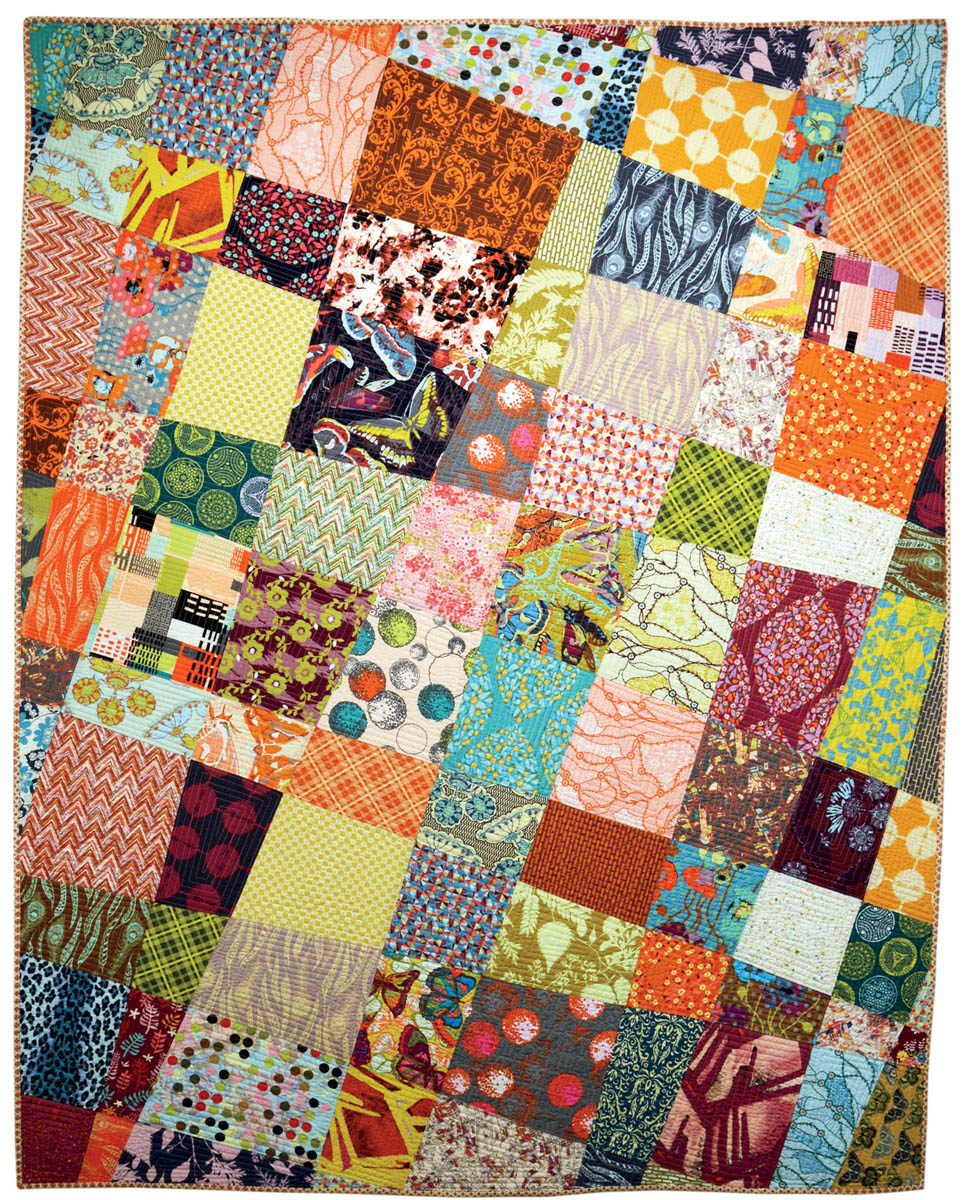
Self-Portrait with Illness: Disorder, Thomas Knauer, 2016, 80 60"
In skewing the parallel and perpendicular lines of traditional quilts, this quilt portrays medical disorders not as chaos but as an atypical organization of ordinary parts, the disorienting and at times debilitating reality of experiencing everything as slightly off.

